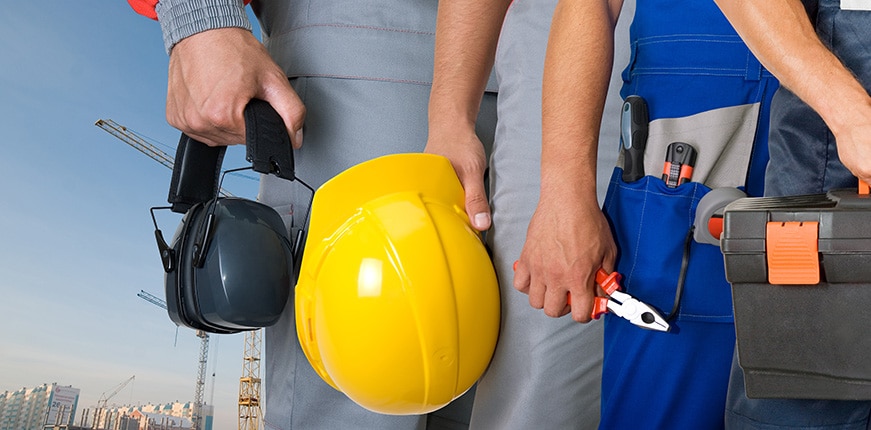
OSHA Issues Revised Standards
Under the Standards Improvement Project (SIP) Phase IV, OSHA has revised requirements in promulgated safety and health standards to remove or revise outdated, duplicative, unnecessary and inconsistent requirements. OSHA has stated that the amendments are meant to reduce regulatory burden while maintaining or enhancing worker safety and health and improving privacy protections.
The changes impact numerous standards and become effective on July 15, 2019. Changes generally include:
- An update to the consensus standard incorporated by reference for signs and devices used to protect workers near automobile traffic;
- A revision to the requirements for roll-over protective structures to comply with current consensus standards;
- Updates for storage of digital x-rays;
- Updates to the approved method for calling emergency services to allow for use of current technology;
- A reduction to the number of necessary employee x-rays;
- Updates to requirements for pulmonary function testing; and
- Removing from the standards the requirements that employers include an employee’s social security number (SSN) on exposure monitoring, medical surveillance, and other records.
More specifically, the following changes are included in the Recordkeeping, General Industry, Maritime and Construction Standards:
Recordkeeping
- Inserts a cross-reference to 29 CFR 1904.5 within the regulations at 29 CFR 1904.10(b)(6) to emphasize the pre-existing requirement regarding when a hearing loss case must be determined to be work-related
- Removes the requirement to include an employee’s SSN from 19 standards that required its inclusion
- Modifies recordkeeping forms required by several standards to include a combined race and ethnicity format
General Industry; Toxic and Hazardous Substances
- Removes the requirement in the inorganic arsenic, coke oven emissions and acrylonitrile standards that employers provide periodic chest X-rays to screen for lung cancer
- Baseline chest X-rays are still required
- Periodic chest X-rays are still required in standards where the chest X-ray is used for purposes other than screening for lung cancer (e.g., screening for asbestosis)
- Allows the use of digital radiography and other reasonably-sized standard films for X-rays in the inorganic arsenic, coke oven emissions, acrylonitrile, asbestos and cadmium standards
- Updates the lung-function testing requirements of the cotton-dust standard to align with current practices and technology
- Updates terminology and references to incorporated guidelines
Construction Standard; Medical Services and First Aid
- Updates the 911 service-posting requirements to be consistent with the current status of land-line and wireless-telephone technologies, including posting location-identification information to effectively communicate the location of the worksite if in an area without automatic-location capability, and requiring employers to ensure communication system used to contact ambulance service is effective
Construction Standard; Gases, Vapors, Fumes, Dusts and Mists
- Updates terminology used to describe permissible exposure limits and to modify language to remove confusion and align with regulatory and consensus standards
Construction Standard; Process Safety Management
- Replaces the entire regulatory text of 29 CFR 1926.64 with a cross-reference to the identical General Industry Process Safety Management Standard at 29 CFR 1910.119.
Construction Standard; Personal Protective and Life Saving Equipment, Safety Belts, Lifelines and Lanyards
- Revises the minimum breaking-strength requirement for lifelines from 5,400 pounds to 5,000 pounds
Construction Standard; Signs, Signals and Barricades
- Updates incorporations by reference to current versions of accepted national standards
Construction Standard; Materials Handling, Storage, Use and Disposal; General Requirements for Storage
- Revisions to exclude residential construction from the requirement to post maximum safe load limits of floors used for storage, but safe load limits must still be met
Construction Standard; Underground Construction, Caissons, Cofferdams and Compressed Air; Underground Construction
- Updates the regulatory language to cross-reference the correct MSHA standard
Construction Standard; Rollover Protective Structures; Overhead Protection
- Removes provisions that specified test procedures and performance requirements and replaces with the references to the consensus standards from which they were derived
Construction Standard; Toxic and Hazardous Substances; Coke Oven Emissions
- Deletes these requirements from the Construction Standard
Additional modifications that were included in the proposed rulemaking are not being promulgated at this time, such as modifications to the General Industry General Environmental Controls, Control of Hazardous Energy (Lockout/Tagout) and Construction Standard PPE Fit requirements.
The modifications, including response to comments, can be found here:
https://www.osha.gov/news/newsreleases/trade/05132019
https://www.osha.gov/laws-regs/federalregister/2019-05-14
VBA professionals are adept at identifying health and safety compliance obligations and assisting facilities in achieving compliance. If you need assistance meeting health and safety obligations, contact VBA today.
